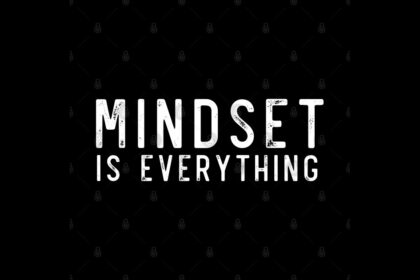
If we think back into our day-to-day interactions and various actions associated with it, we can identify different patterns that we generally follow. These patterns which we could call as our mindsets could alter or change even during a conversation or any other action that we are into. It could also alter based on a particular tone of the person to whom we are talking or the change in a particular situation that we are into at that point in time.
While its difficult to really categorize these millions of actions and decisions that we take into a few mindsets there are several research which have helped categorize most of these actions into a few basic mindsets. Understanding of this will help us understand why we did certain things at certain points of time and if there was a way in which this could have been done better or avoided if needed. As awareness is the starting point of all learning, please find the same below.
1. Decision making mindset.
This mindset normally comes into play during any conversation or any actions that we are involved in like making choices or analyzing plans. Since deciding or understanding when we are in this mindset might be little difficult an easier way to understand the same would be this type of mind set is in operation whenever we are asking the question What’s this really about in our day to day lives, thoughts and conversations. Internally during this process our brains frontal control network becomes active. During this process we take several decisions mainly subconsciously to decide a variety of things including at times whether this is serious enough for us to apply our minds and to provide a response.
In our day-to-day thoughts and conversations when we are thinking and trying to determine things like what should I discuss or what should be my future course of action, what should be my actions including conversations to achieve my desired goals etc, then this decision-making mindset comes into play.
This mindset also has two subcategories which come into play after the initial rounds of what’s this about when each person decides that this is something important that I need to give attention to.
a. Practical mindset
In this situation we are looking at practical solutions that can lead to an easier solution which can be implemented also.
b. Empathetic mindset
In this mindset we are basing our thought process on earlier experiences or stories by which we have been influenced. One important think about stories that we need to understand is as a species whenever we hear stories our analytical brain gets shut down or rather stories bypass the analytical part of the brain.
2. The Emotional Mindset
This mindset comes into play whenever we are connecting to anything which is linked to our beliefs, emotions, and memories. This mindset comes into play under all situations which are linked to how do we feel. Whenever situations arise where we need to use the emotional mindset then the various parts of the brain which are considered as linked to emotions mainly nucleus accumbens, amygdala and hippocampus comes into play.
3. The Social Mindset
This mindset gets prominence the moment we start giving priority to how we are seen by others and how we see ourselves and our social identities. These thoughts can be broadly categorized into “Who are We” parts which plays out in our minds.
Very often this is referred to as the default mindset under which we operate today and a study by Mathew Liberman found out that our interactions and hence our thoughts and mindsets are in the social mindset frame for 70% of the time.
Like I said in the beginning while we have broadly categorized our mindsets into 3 broad categories it’s almost impossible to segregate our thoughts and actions in this way. This is so because we use all the three mindsets sometimes even in a single dialogue. During any discussion or a conversation, we shift between all these three mindsets. What makes it even more complex is the same happens for the person or persons with whom we are having the conversation.
As we go about our daily interactions, it’s important to know about these mindsets. They give us clues about why we do what we do and how others might be feeling or thinking. Understanding these mindsets helps us get along better with others and make smarter choices. So, this knowledge is like having a map that shows us how to make better decisions, manage our emotions, and build stronger connections with those around us. To continue getting more insights on mindsets and such similar topics subscribe to my LinkedIn page, Rejo’s Business Bytes, or my website, rejofrancis.com.



